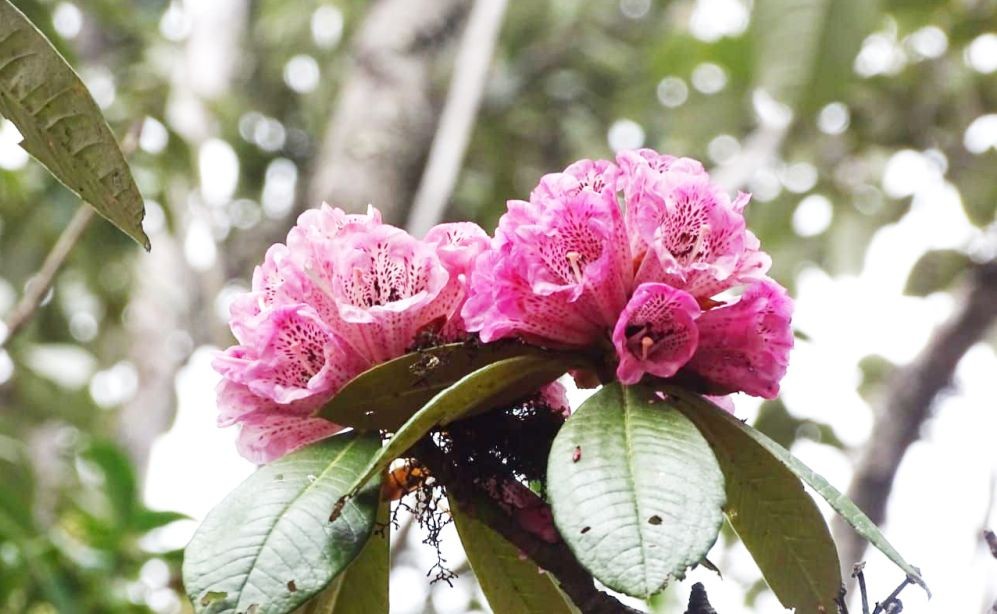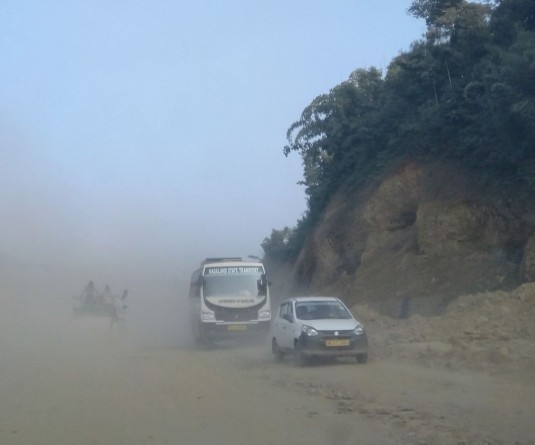The Rhododendron wattü, which among many flora, is found in the Dzükou valley. (Photo courtesy: Dr Keneikhoto Yano)

Vibi Yhokha Sophie
Kohima | January 29
The Dzükou valley is home to several rare species of flora and fauna such as the Dzükou Lily, Rhododendron macabeanum, Rhododendron elliottii etc.
The presence of the elusive Marbled Cat and Asiatic Golden cat (both endangered vulnerable species) has also been recorded in the forests surrounding the Dzükou valley, (August 2019 research, Journal of Threatened Taxa).
Scientists of the Botanical Survey of India have recorded 332 species of plants growing in the valley, cites Dr Vizovol Mekro, Principal, Phek Government College, of which a good number are endemic to the Dzükou valley.
Considered an ‘ecologically important high elevation grassland ecosystem’ (Grewal et al. 2011), fires continue to be one of the biggest threat to the biodiversity of Dzükou valley.
“It is a loss of habitat for many species,” Dr Keneikhoto Yano, researcher, and a frequent trekker to Dzükou valley says, referring to the recent fire at the Dzükou range.
The Nagaland Forest Department recorded four major fire incidences in the last 15 years—2006, 2010, 2014 and the recent 2020-2021 fire. Besides these major fire incidences, minor fires have also occurred in between.
The white rhododendron, endemic to the valley, and smaller species of birds that thrive in the dwarf bamboos are at risk, points out Yano. The absence of ground/surface cover, with the valley mostly consisting of humus, leads to an increase in soil erosion. Here, Yano reminds that soil erosion also threatens water bodies.
For Dr Mekro, there are both negative and positive impacts of the fires. A positive impact being the regeneration of plants. “When the dwarf bamboos are burned, new greeneries will sprout and it paves way for animals like deer to graze in the open,” says Dr Mekro.
According to Yano, the fire creates the space for other species to grow. The dwarf bamboo being an invasive species, when burned, creates space for other plants to grow. Yano informed that in the aftermath of previous major fires in the valley, blooming of the Dzükou lily in abundance was witnessed.
Yet, he also states that many saplings that are taking root are often destroyed in the fire. Besides the flora, smaller animals that thrive in the valley are also threatened.
Surrounding forests and the Dzükou valley, according to researchers and scientists, represents one of the largest landscapes in the State with contiguous habitat for wildlife.
There is danger of a decreasing population of rare species, notes Dr Yano. In his trekking adventures, Dr Yano has captured images of over 25 species of flowers growing in the valley. “Besides the flora and fauna, the valley is also home for medicinal herbs and plants. There are so many things to be discovered in the valley but there is very few research,” rues Dr Yano.
Expressing concern over the lack of extensive research in Dzükou Valley, Dr Mekro says, “With limited research, we are yet to know how many species of flora and fauna are present in the valley. And we don’t know how many are dying in the fire.”






